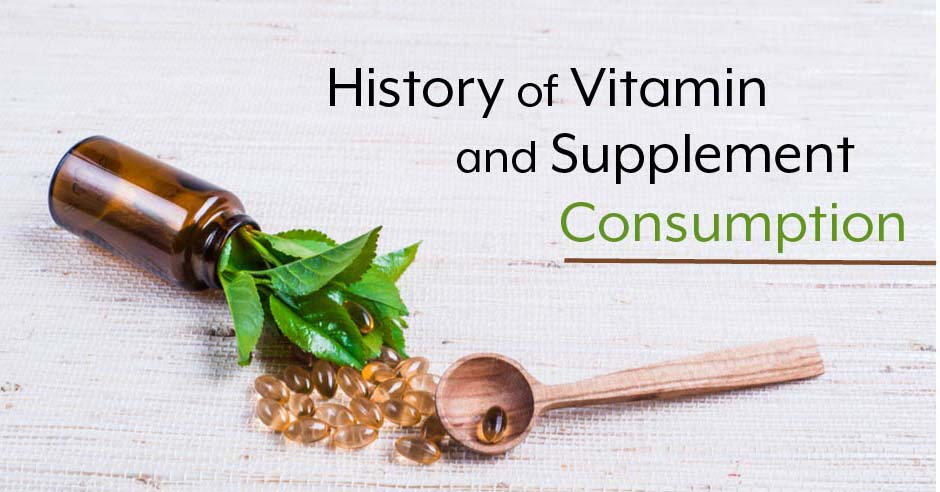Vitamins are essential to all bodies, all ages — important for overall health, and the proper
development of cells as well as their function and continuing growth.
Without the right vitamin intake, the risk for multiple health problems increases. Taking your vitamin and mineral supplement is critical for everyday health.
Without consuming enough vegetables, fruit, whole grains, lentils, and other healthy foods, a body doesn't receive enough or the right type of nutrition. Vitamins and supplements can help.
Supplement and vitamin manufacturers know this and strive to produce the highest quality product.
Understanding the importance of vitamins and supplements as well as how they're made can help when choosing products and working toward a healthier and happier life.
What are Vitamins and Supplements?
Vitamins are defined by the U.S. National Library of Medicine as "a group of substances that are needed for normal cell function, growth, and development."
The 13 essential vitamins required by the human body are:
- Vitamin A
- Vitamin B1 (Thiamin)
- Vitamin B2 (Riboflavin)
- Vitamin B3 (Niacin)
- Vitamin B6
- Vitamin B7 (Biotin)
- Vitamin B12
- Vitamin C
- Vitamin D
- Vitamin E
- Vitamin K
- Folate
- Pantothenic acid

Vitamins are either fat-soluble or water-soluble. Like its name implies, fat-soluble vitamins are stored in the body's fatty tissue, while water-soluble vitamins are used quickly by the body and then any leftover exits via urine.
The only water-soluble vitamin that lingers is vitamin B12, stored in the liver. Vitamins A, D, E, and K are fat-soluble, leaving the other nine essential vitamins to fall into the water-soluble category.
The U.S. Food & Drug Administration (FDA) states, "Dietary supplements include such ingredients as vitamins, minerals, herbs, amino acids, and enzymes."
These supplements can be found in various forms that include "tablets, capsules, softgels, gelcaps, powders, and liquids".
Differences in Functions?
Both vitamins and supplements have specific functions or jobs to help the body. Some vitamins like vitamin C (ascorbic acid) work as an antioxidant providing a variety of functions like protection for the immune system, improving oral health (good for teeth and gums), and assisting in the absorption of iron (which helps fight against anemia).
Vitamin supplement manufacturing can simplify the way an essential vitamin is available for intake. Vitamin C can be produced in the form of convenient tablets, liquids, powders, and other forms so it's not always necessary to rely on specific fruits or vegetables for its benefits.
The various B vitamins enable proper metabolic function, making them very important and popular in supplement form.
B6, also known as pyridoxine, is essential for red blood cell health and neurological functions. According to the U.S. National Library of Medicine, "The more protein you eat the more pyridoxine your body requires."
Thiamine or B1 also helps cells by working to convert carbohydrates into energy, while niacin or B3 works to decrease cholesterol levels.
Folate and vitamin B12 work together in the formation of red blood cells — without folate, thymidylate (TMP) can't form, which is needed for the synthesis of DNA.
Therefore, no folate means no division of living cells. Pregnant women require higher levels of folate to help with the baby's development.
Vitamin Supplement Ingredients
Naturally vitamins are found in both plant and animal products. They also can be synthetically produced in a laboratory.
For example, vitamin C is in citrus fruits like oranges, lemons, limes, and grapefruit, while folate is found naturally in broccoli and spinach.
Commercial vitamin supplement manufacturing often produces synthetic supplements in the laboratory because the synthesized versions often are more affordable and easier to produce.
When vitamin supplements cost less to make, it's easier for vitamin supplement manufacturing to offer their quality product to a larger demographic.
Supplement ingredients may range from acetone to synthesized vitamin A or cyanocobalamin for vitamin B12 when produced industrially by microbial fermentation.(Process for the production of vitamin B12, Patent No. US 6492141 B1 )
When manufacturing vitamin capsules or tablets, additional ingredients, such as microcrystalline cellulose, are needed as filler.
Other fillers may include but are not limited to calcium and maltodextrin. Silicon dioxide, stearic acid, and starch also may be added to help in manufacturing process — starch or cellulose gum contributes to the supplement's ability to dissolve and becomes a key component.
Without the starch or cellulose gum, digestion often is difficult.
Techniques can and do vary between laboratories regarding the process for synthesizing vitamin supplements. However, a basic manufacturing process may be used regardless of the type of vitamin.
The Rich History of Vitamins
The term "vitamine" ("vital amines") was coined in 1912 by Casimir Funk, a Polish biochemist.
It took a collaborative effort between biochemists like Funk and an array of scientific minds, including physiologists, physicians, and epidemiologists to unravel the mystery of the vitamin and determine its importance and function.
According to an abstract from the National Center for Biotechnology Research (NCBI), "Research on the vitamins that are related to major deficiency syndromes began when the germ theory of disease was dominant and dogma held that only four nutritional factors were essential: proteins, carbohydrates, fats, and minerals. "
When it was discovered that certain conditions like scurvy and rickets were not a disease, but actually caused by a lack of specific vitamin, the importance of proper nutrition and supplements became much clearer.
The golden age of chemistry in the early to mid-twentieth century coincided with the golden age of vitamin, with all known vitamins discovered and successfully synthesized.
Today, research continues unraveling the mysteries of these essential substances and how they
function and benefit the body.
"There is indeed a large need for extra vitamins, other than those derived from plant and animal food sources, due to unbalanced food habits or processing, food shortage or disease.
Added vitamins are now either prepared chemically or biotechnologically via fermentation or bioconversion processes," reports the Laboratory of General and Industrial Microbiology, University of Gent, Belgium via an abstract published at the NCBI.
Vitmains will only contiunue to grow because more and more experts are seeing the necessity for them. Use this blog as a platform into making the healthy decision to start taking vitamins regularly!







